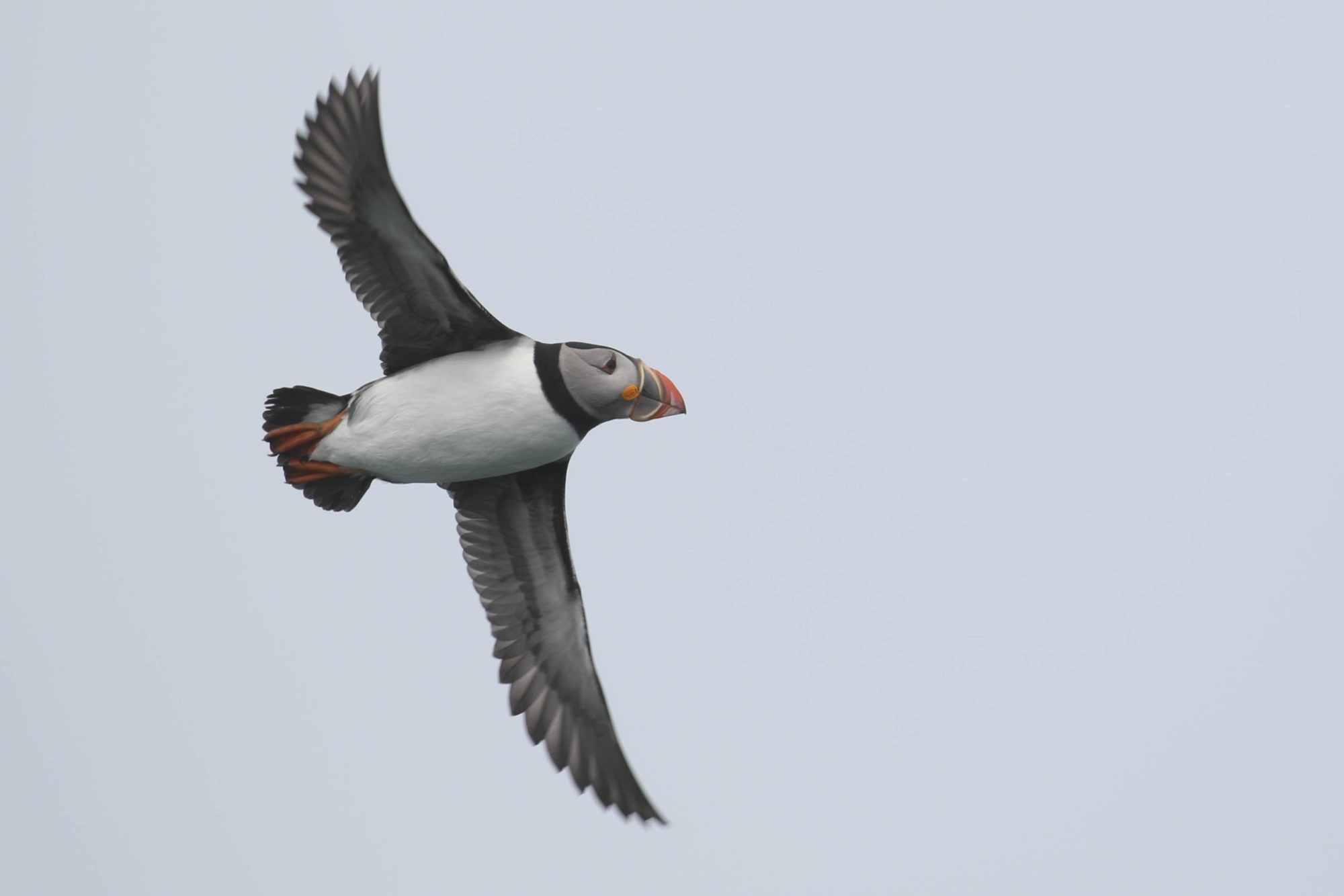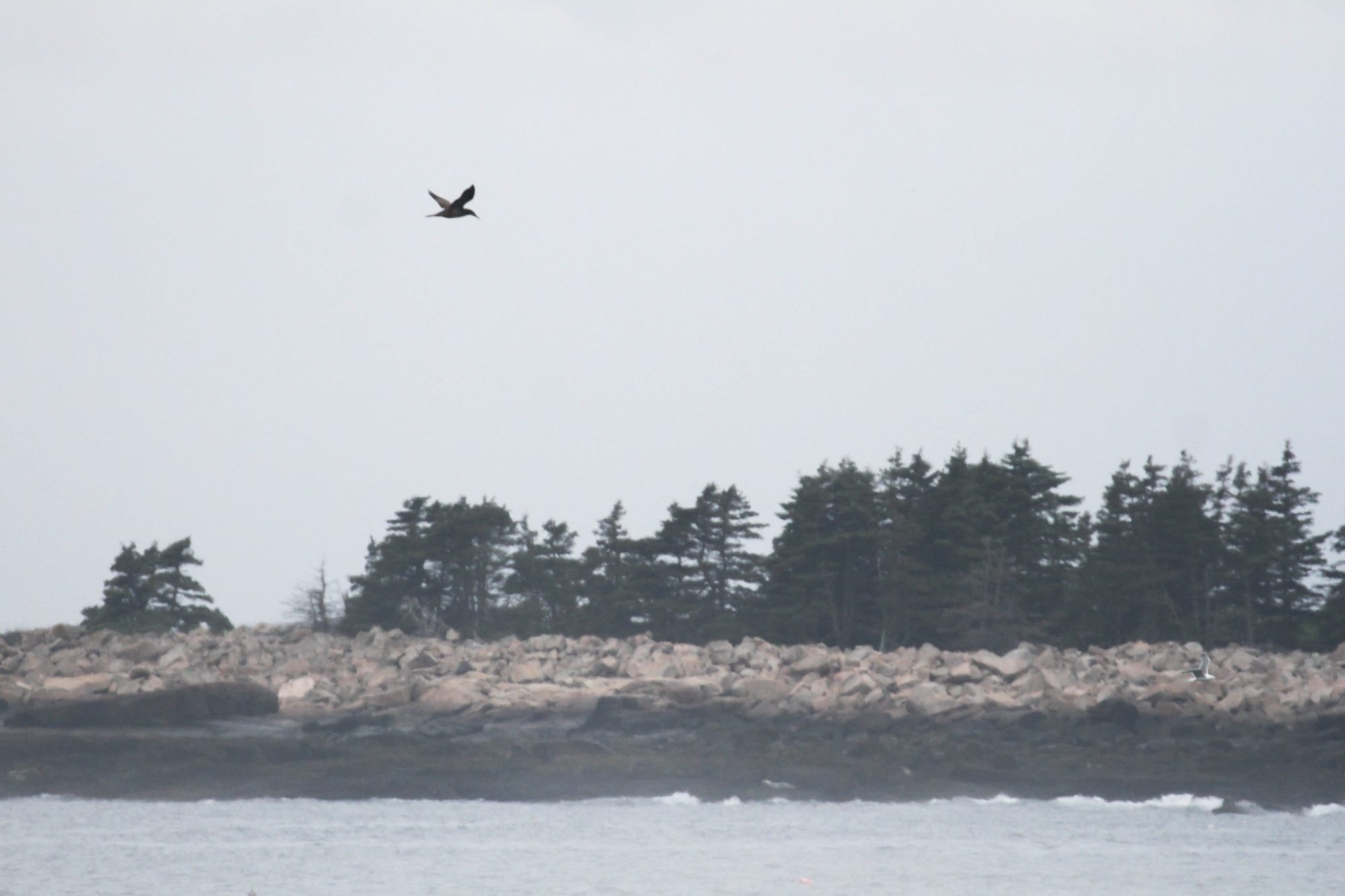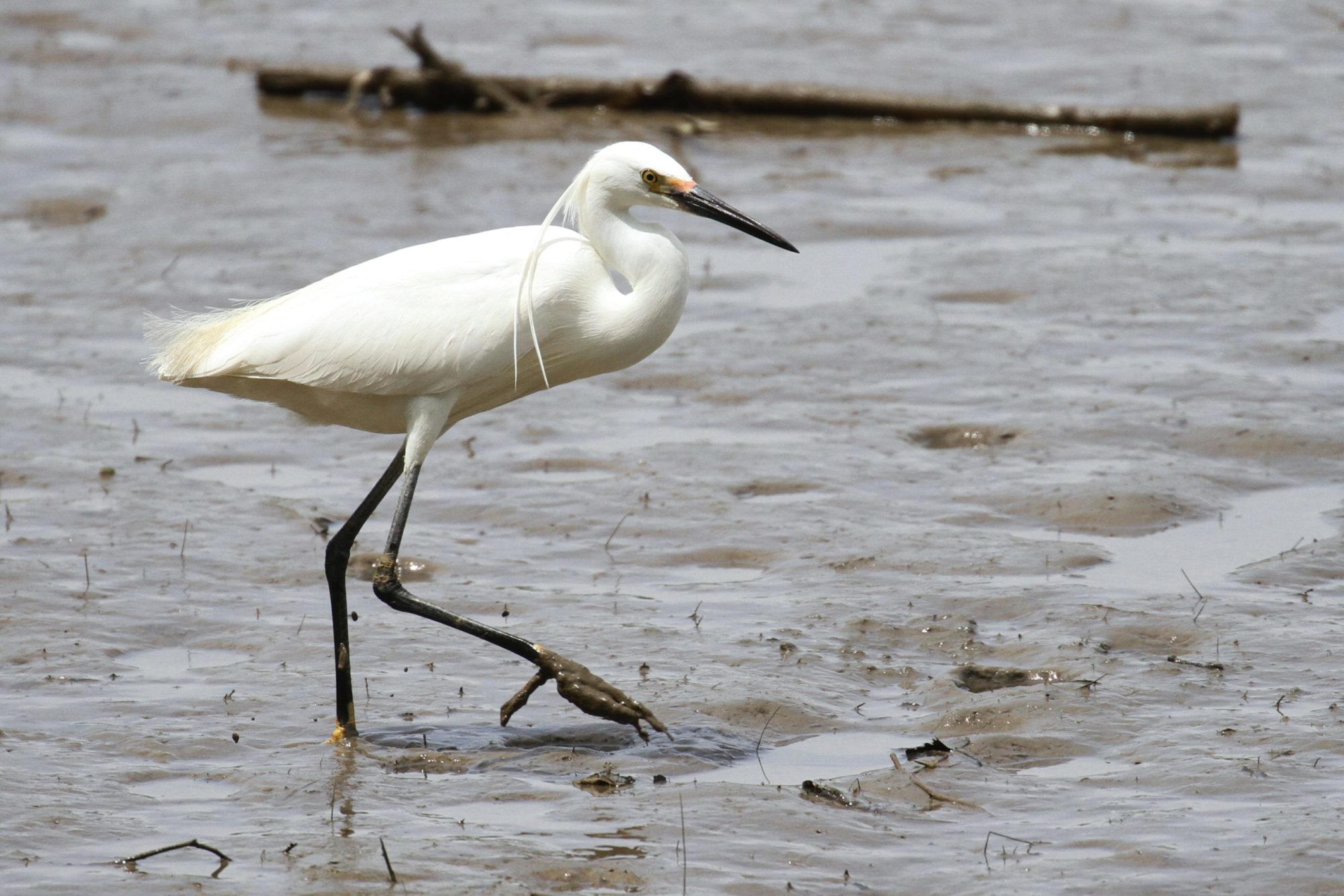
Maine Attractions: Regulars and Rarities
Jun 3, 2020 | by Chris Brown
As I mull over what was my schedule for the summer, Maine is most definitely on my mind. This past Sunday would have marked the end of the Acadia Birding Festival in Southwest Harbor on Mount Desert Island. Mount Desert Island is famous as the home to most of Acadia National Park, and the port town of Bar Harbor. The Acadia Festival (ABF) is hands down one of my favorite birding events of the year because of the birds and so many other factors. I will only really be touching on the birds here but I don’t want to skip mentioning that the food, the atmosphere of the area, the field trips and the people are all top notch. As I said, I’m going to tell you a little bit about the fun experiences that the Wildside team has had at the festival and during our associated birding tour through Maine, New Hampshire and Vermont. I’ve broken them down into birds that breed reliably in the area; “The Regulars”, and birds that have been a little less expected; “The Rarities”!
— The Regulars —

A Bicknell’s Thrush atop Saddleback Mountain, photo by Chris Brown
Bicknell’s Thrush
One of the biggest bird attractions of the festival (and the region as a whole) is the endemic, and super range-restricted Bicknell’s Thrush. This Catharus thrush nest on mountains above 3,000 feet in elevation and are found only in New England and southeastern Canada. This species is very similar to the closely related Gray-cheeked Thrush and Veery. In fact, until 1995 Bicknell’s was treated as a subspecies of Gray-cheeked Thrush! It is one of our most range-restricted breeding birds and is very sought-after by visiting birders. In the past we have found them on our trips up to the top of Mount Washington in New Hampshire and also at Saddleback Mountain in Maine. Other special wildlife can be found in their mountain-top habitats including Blackpoll Warbler and Snowshoe Hare!
Spruce Grouse
Another in-demand local resident is the often shy and retiring Spruce Grouse. The males are striking: dark, slaty gray with diamond shaped white feather tips creating the appearance of a starry night. A modest but vivid scarlet ‘comb’ sits over each glassy eye. Along Maine’s ‘Bold Coast’ they are found in locations that are as stirring as the birds themselves. We hope to see them at West Quoddy Head State Park hiding in the coastal spruce forests. We have also had luck with this bird on the Vermont portion of our tour, finding them in dense bogs among Canada Jay and sometimes Black-backed Woodpeckers!

Male Spruce Grouse dust-bathing, photo by Alex Lamoreaux
Atlantic Puffin
It’s hard to talk about birding in Maine and not mention a bit about Atlantic Puffins. What can I say? They’re really cool. Yes, they’re endearing. They’re also a lot of fun to watch. In the summer they’re both dapper and colorful. Their genus name, Fratercula, actually refers to how they resemble tiny friar monks standing on the rocky islands! On the ABF boat trip they are always one of the star attractions and they’re essentially a given as long as the boat can leave port and get relatively close to Petit Manan Island. Weather permitting we also disembark at one of their nesting colonies during our Maine tour in order to quietly watch them from blind! Their antics and sounds make for a memorable experience every visit.

Atlantic Puffins fly by at close range, photo by Chris Brown
Arctic Tern

Arctic Tern at Machias Seal Island, photo by Alex Lamoreaux
Speaking of memorable experiences, when we are able to disembark on Grand Manan Island we are generally hurried along by the Arctic Terns which aggressively defend their nearby nests! It is very common for them to swoop toward our heads, usually pulling back at the last moment. But not always! There are ways to peacefully thwart them as we move to the blinds, which we do calmly but with a certain urgency, but it makes for fun memories.
The weather along the Maine Coast is often uncertain, so even when we are unable to land on the island we still find a way to watch these graceful and athletic “Champions of Migration” which fly 10’s of 1000s of miles across the oceans each year in migration, only to come back and lay their eggs and raise their young in places like coastal Maine.
Boreal Chickadee
The hardest Maine specialty to come by at this time of year is probably Boreal Chickadee. The timing of our tour is just a few weeks after the peak period when these chickadees are most vocal and are establishing territories. Despite how tough this little bird can be to find, we have had luck, especially in the Rangeley area. Here we have our best chance at spotting a roadside Moose and finding Common Loons yodeling from forested ponds! Listen carefully for this colorful chickadee’s harsh calls…

Boreal Chickadee, photo by Alex Lamoreaux
— The Rarities —
Lark Bunting

A truly stunning rarity – a male Lark Bunting, photo by Edison Buenano
One of the rarest birds ever found at the ABF was initially spotted by Wildside’s own Edison Buenano, who was visiting Maine for the festiva! An auspicious find for his first visit to the state, and his first Lark Bunting, for that matter! A true rarity, Lark Bunting has been recorded only a handful of times in Maine, and never before had one been found on Mount Desert Island.
In Edison’s own words: “I was leading a field trip to Seal Cove in Acadia National Park with Billy Helprin and David La Puma. I knew it was a new bird for me because I couldn’t remember the name, so I asked David, ‘What is this black and white bird?’ and I showed him and he went crazy! ‘It’s a Lark Bunting! It’s a very rare bird here!’ After a few minutes the place was packed with birders, so I was famous for about twenty hours!”
Brown Booby

Brown Booby against overcast Maine skies, photo by Chris Brown
One bird that was sort of on the radar as a potential rarity during the timeframe of the festival was Brown Booby. Similar in shape to the Northern Gannets that breed nearby, this bird of tropical and subtropical waters has been turning up along the Atlantic Coast (and elsewhere, including Colorado, Arkansas, etc.) in late spring with increasing frequency over the last few years. Each year, the ABF ends with a day-long pelagic trip out of Bar Harbor in search of nesting puffins and other pelagic birds. During the 2018 boat trip an immature Brown Booby made several passes quite close to the boat soon after we left Bar Harbor and were heading out through the island channels. This immature bird was a delighting and surprising find for all on board. It showed off incredibly well; foraging nearby and making several close passes!

Brown Booby flying above classic Maine coastline, photo by Alex Lamoreaux
Little Egret
A major rarity that has actually become an expected sighting during our Maine tour is the Little Egret. This stray from Eurasia has become somewhat established in the Scarborough Marsh area of ‘Down East’ Maine each summer for the last few years. We have made it a point to seek out this rare visitor. There are many Snowy Egrets lurking through the saltmarshes of coastal Maine, but the Little Egret stands out by showing 2 super long, thin head plumes unlike the short, bushy crest of our Snowy Egrets. We’ve had good luck with this species during our trips, and hope to see one again next year during out 2021 tour!

A handsome Little Egret showing the 2 long, thin head plumes unlike the bushy crest of our Snowy Egret, photo by Alex Lamoreaux
South Polar Skua

Exiting the cabin I found myself being stared down by a skua, photo by Chris Brown
One of the major highlights of each year’s Acadia Birding Festival is the pelagic boat trip to Petite Manan Island, home to a colony of nesting puffins, razorbills, Arctic Terns, and more. As if those species weren’t enough of a draw; one never knows what unusual sighting will be found on the ride out or back. We try to do a similar trip on our Wildside tour, if weather allows. On one of these boat trips while I stopped briefly in the cabin the naturalist aboard announced “Sooty Shearwater on the water, close. Starboard side.”
Exiting the cabin on the starboard side it became apparent that this bird was much heavier and bulkier than a shearwater! We had stumbled upon a South Polar Skua, a true pirate and a hoped-for species on any east coast pelagic trip! Wow! These birds make a living scavenging penguin colonies at the edges of Antarctic ice flows, and then spend the Northern Hemisphere summer in the North Atlantic and North Pacific Oceans, a journey of thousands of miles! This sighting was absolutely breathtaking and unexpected!
Long-tailed Jaeger

A quick parting shot is all I managed of our Long-tailed Jaeger, but it shows the long, thin tail streamers and two white primary shafts which distinguish this species. Photo by Chris Brown
Minutes later on that very same boat tour we were buzzed by the least common of the 3 jaegers: a Long-tailed Jaeger! It is also the smallest and most graceful jaeger species. Our whole group was clustered close together along the boat’s railings, which was very lucky as the bird flew by at close range but never seemed to consider stopping or changing course. A solid, but quick, flyby and a lifer for all participants, if I remember correctly. This also represented potentially the only record of this species in the Gulf of Maine during the month of June! You just never know what we are going to turn up out there!
Red-billed Tropicbird
“Troppy”, the wayward Red-billed Tropicbird has returned to his summer home off Seal Island near Rockport for the 16th consecutive year (as of last week!). This lonely bird seems to be engaging in “mirror” migration, essentially orienting his migration backwards. He is seen relatively reliably from late spring until September each year; searching for a mate and sometimes oddly attracted to a white-and-red crab buoy! In 2021 we will endeavor to Seal Island in hopes of an encounter with this oddball rarity on our new target tour!
As you can see, the diversity of birds both expected and unexpected is fantastic! The species listed in this article are really just selections from the past 5 years or so. As I write this, Mount Desert Island, where the ABF festival is held, is actually hosting a super rare Black-headed Grosbeak and also a Pink-footed Goose! Incredible! Maine is a state with plenty of nooks and crannies to explore, and its birds – both common and rare – can often be found in unexpected places. We hope you’ll join us to explore this beautiful, scenic state on our next visit and we hope to see you at the Acadia Birding Festival in 2021!

Red-billed Tropicbird, photo by Kevin Loughlin
1 Comments
Leave a Comment
You must be logged in to post a comment.

































What a wonderful state with great birding and brilliant birds.